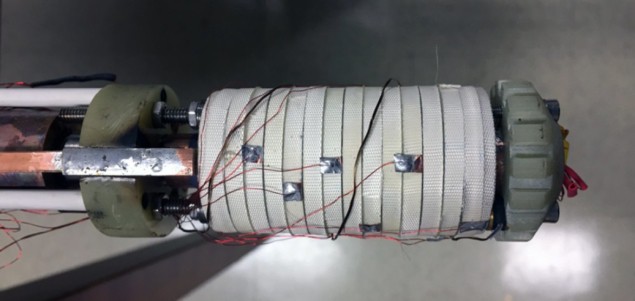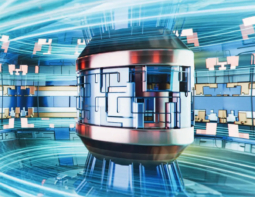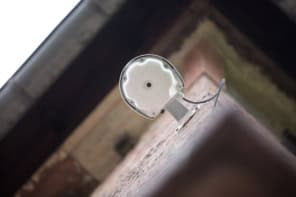
The highest continuous magnetic field ever created in the lab has been achieved by physicists in the US. The 45.5 T field was made using a compact, high-temperature superconductor magnet. It was actually designed to achieve even higher fields but was damaged during its record-breaking run.
Dubbed “Little Big Coil” (LBC), the magnet was made by Seungyong Hahn and colleagues at the National High Magnetic Field Laboratory (MagLab) in Tallahassee, Florida. They used a coil made from a relatively new type of high-temperature superconductor called rare earth barium copper oxide (REBCO), which allowed them to make a very compact device
Magnetic fields as high as 2800 T have been created very briefly in Russia using a technique that involves setting-off high explosives outdoors – and last year researchers in Japan used a less violent indoor process to reach 1200 T for 100 µs. Both techniques, however, are destructive and not suitable for generating continuous fields.
Previous record
In 1999, MagLab unveiled an instrument capable of creating a continuous magnetic field of 45 T, which was the previous record. Named 45-T, the device consists of a series of low-temperature superconducting coils; each containing layers of heat-dissipating copper and separated by electrically-insulating layers. These coils are then contained within magnetic coils made from conventional resistive metals – and together the two magnets create the 45 T field.
This design protects 45-T from quenching – a potentially destructive process that occurs when a section of the coil loses its superconducting properties, causing it to heat-up rapidly. The downside of this design is that 45-T weighs-in at 35 ton and draws 30 MW, making it impractical for all but a few facilities worldwide.
In comparison, the LBC magnet is a mere 390 g. It requires 18 MW to operate and is about the size of the core of a toilet tissue roll. The researchers made the device using coils of conducting tape coated with REBCO, which is known to support extremely high current densities. Again, the setup was contained inside a strong resistive magnet.
Paper thin
Unlike 45-T, no insulation is required between the coils. In addition, far less copper is needed to dissipate heat because if quenching occurred, the current can simply bypass the damage by switching to a different coil. Ultimately, this means that the conductor tape could be paper thin. Hahn and colleagues calculated that this setup should allow sustained magnetic fields far stronger even than those produced by 45-T.

Indoor record for magnetic field strength is smashed by physicists in Japan
When testing the LBC, Hahn’s team briefly measured a field of 45.5 T before the magnet unecpectedly quenched. This was somewhat disappointing, as the team had designed their magnet to create a substantially stronger sustained field.
After disassembling their device, they discovered that the quenching occurred due to widespread damage at the edges of the brittle REBCO strips. This was caused by high mechanical stresses characteristic of conductors in strong magnetic fields. The researchers now hope to solve this issue in future versions of the LBC. Ultimately, they believe that they should be able to set out a realistic roadmap towards building the strongest sustained magnet using cheap and compact components.
The LBC is described in Nature.



